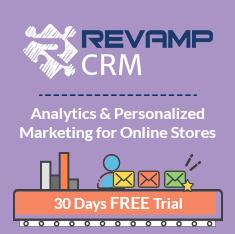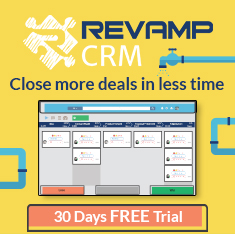Now that we have discussed how a welcome email campaign can significantly affect your customer relationship and discovered the secret to mastering it, let’s check out the best practices for a post-purchase campaign.
There’s a false misconception that the success of an eCommerce marketing plan can be measured only when it ends with the customer first purchase. Well, It certainly doesn’t. You have to bear in mind that to retain a customer is far more valuable on the long run than to acquire a new one. So as we begin focusing on retention, a customer making a purchase, in fact, marks the beginning of the journey, not the end.
If you think of customers in view of a life cycle, considering customer acquisition first, initial purchase second, then brand loyalty third, it’s easy to see how a first-purchase is your first step into building customer loyalty. what I mean is that many businesses are leaving money on the table by ignoring current customers in favor of increasing new sales.
So when shoppers opt in as part of the purchase process, what do you think they’re expecting? It’s important that you communicate differently with these new subscribers. Consider, for example, that a new customer checks the “receive our emails” box during checkout. The welcome series might include some overlap with your regular welcome series, but it also has to have content specific to the purchase they have made.
Today we will get to know the 7 best practices for Post-Purchase E-mails.
-
Go with the post-purchase series
You can be smart, and send your customer a series of four emails after they place an order on your website.
First email – Congratulations on your purchase:
To begin with, the first post-purchase email might cheer for and thank the customer for the purchase, as well as mention some of the benefits of doing business with you (high-quality products, great selection, excellent customer service, and so forth).
Second email – A special discount:
Could be a perk-up email, offering a motive to return to your website and make a new purchase.
The third and fourth emails may then overlap with your regular Welcome series:
Perhaps offering a deeper dig into what to expect from your email program (content, rate, etc.) in the third message. In message four, you can outline your channels (SMS, mobile app, social media, print catalog) and everything that the new subscriber would use to connect with you.
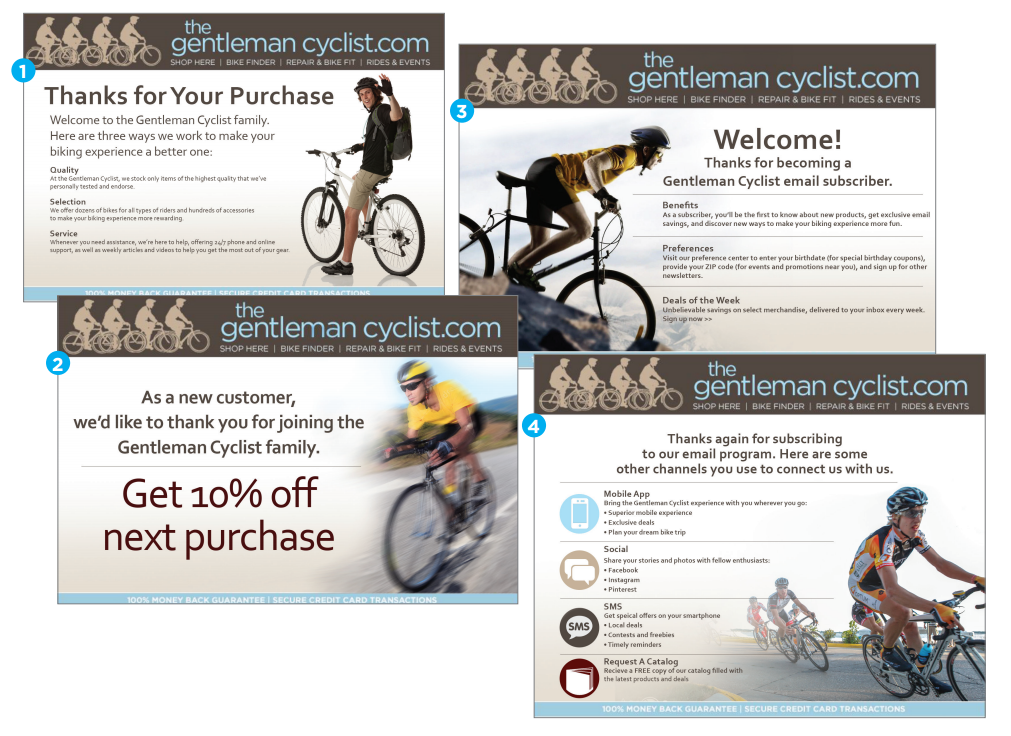
When to send?
First email should be sent no longer than an hour after a purchase has made.
Second email could be sent 5 days after a purchase
Third email could be sent after a week
Fourth email could be sent 10 days after a purchase
-
Post-Purchase Survey
This one is a really smart way to instantly gain your customers’ trust and elegantly force them to appreciate your professionalism. Follow-up messages asking customers to review their transaction /product or complete a brief survey on the purchase experience offer a double benefit: They give you an extra customer touch point, together with providing essential customer satisfaction feedback.
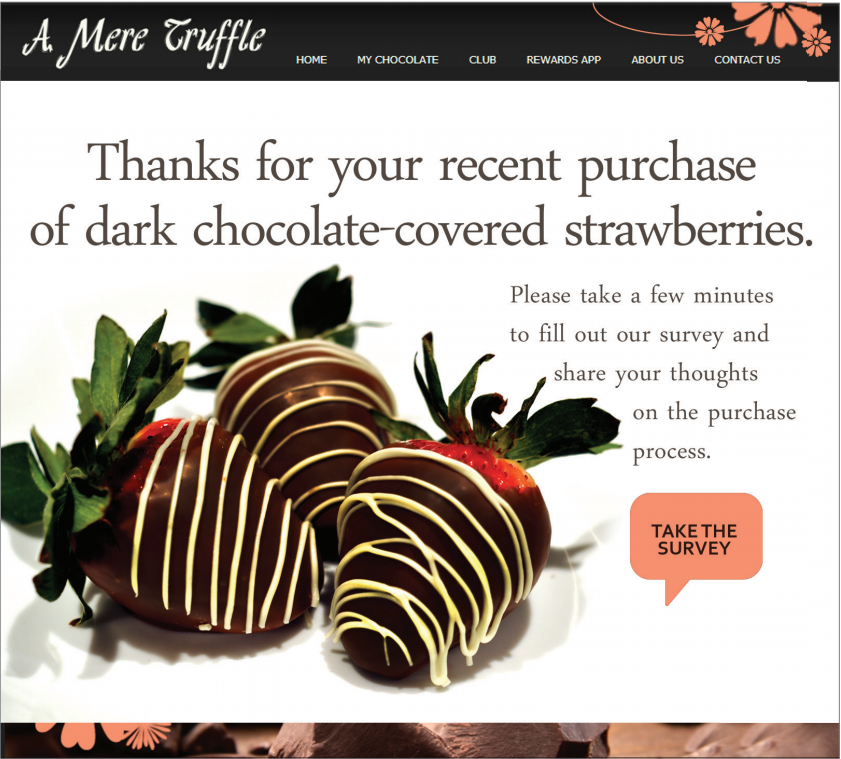
When to send?
The message timing may vary, but you’d typically want to send these emails a few days after the customer receives the shipment, so you will need to set up your system to send them by the estimated delivery date. I’ll whisper a little secret, Revamp CRM has a pre-built solution to help you set up the email automation in less than 3 minutes.
What to ask?
As for what you should ask, it will vary based on your business, as well, but anything related to the product or the ordering and shipping process is recommended. Common questions include whether the order arrived on time, whether they had any trouble ordering, and whether the customer experience was by and large positive.
Sending post-purchase surveys helps you identify problems in the transaction process and discover areas for development. In addition, by taking a positive role in requesting feedback, you’ll help minimize the number of unsatisfied customers and solve common issues. These surveys, though, are not always used for negative feedback. You will most essentially learn what works and what doesn’t, and you can use positive feedback to identify content to be used for recommendations.
-
Bounce-Back Strategy
This type of emails consists of special offers or incentives sent to recent shoppers to quickly encourage them to come and buy again. It’s effective as it feels like a reward to loyal customers and always seems like a win situation because they’re at their most engaged.
Whereas it’s simple in concept and implementation, these emails bring extra revenue and offer another opportunity to connect and say “thank you for buying.” The wording is basically straight-to-the-point and standard, along the lines of, “Thanks for your purchase. Now here’s $15 off your next purchase.”
Smart sellers would add a touch of sophistication in the shape of a different offer based on the initial purchase size — $10 off for those whose transaction was less than $100, and say $20 off for those who bought over $100 worth of goods, for instance.
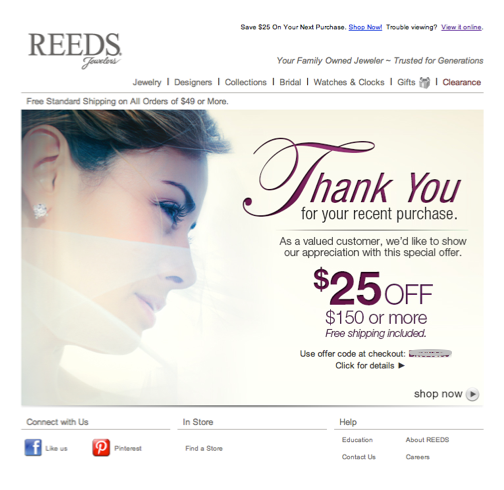
When to send?
Bounce-back emails are usually sent within one to two weeks of purchase, and often within a few days of purchase. To find the optimal interval, you need to test your customers for a while.
-
Cross-Sell Tactic
This happily takes us to the very important part that is the “Cross-Sell” messages. This type of email recommends products or services based on the customer’s most recent purchase. The recommendations should be automatically determined through your personalization system, which you can fully depend on Revamp CRM smart marketing automation tools for, without a doubt.
Let’s say that a customer purchased a camera. The subsequent cross-sell email could contain offers for lenses, flashes, batteries, and other products that are typically purchased by buyers of that camera.
These emails provide another “touch point” with customers and are great performers because they are mostly related to the item the customer bought. Who wouldn’t love to receive an email with cool recommendations related to something they have just purchased?
Now for the best practices, it’s essential to include photos of the purchased product AND the recommended products.
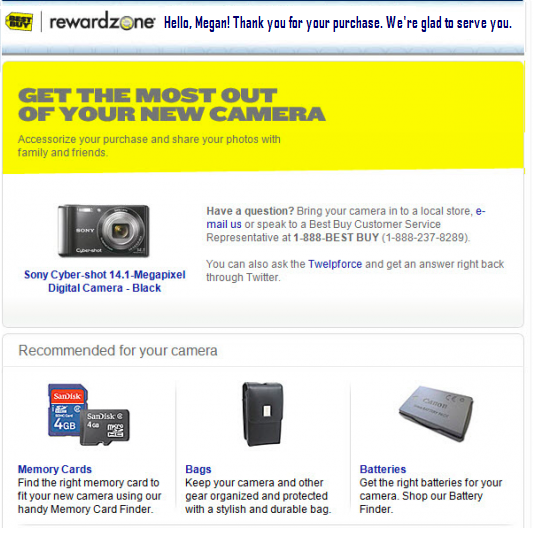
When to send?
As for timing, it varies according to product lifecycle and the customer’s buying rate, so test intervals to determine optimum rhythm.
-
Up-Sell Tactic
Like cross-sell emails, these emails use a previous sale as the drive for the seller to offer a recommendation. However, unlike with cross-sell emails, which focus on matching products, the goal of up-sell emails is to direct a yet bigger purchase based on your company’s objectives and Customer Lifetime Value (CLV).
For instance, if a customer ordered a cinnamon roll, the up-sell email might recommend a “Perfect pairing” of a featured beverage and a flavored cinnamon roll for the next purchase.
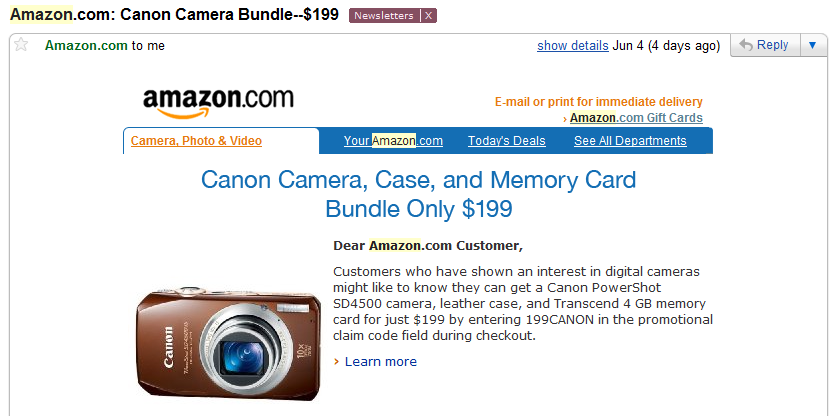
When to send?
These emails are usually date-specific—their timing based on the point at which product purchasers would typically be expected to start thinking about upgrading to an advanced version. The trick is to avoid belittling the initial product the customer purchased, and instead just underline the cool features the better model offers and how it will improve their experience in general.
- Product Recommendation
Even though these messages share some features with cross-sell and up-sell emails, there is a major difference:
Whereas cross-sell and up-sell emails are specific to a single purchase, recommendation emails propose offers based on several purchases, along with other factors.
For instance, a monthly recommendation email might draw in items related to the customer’s prior purchases, browsing behaviors, shopping cart, wish list, and stated interests. Although the content might not be so specific, casting your net a bit wider can increase the chances you will stumble on an item that captures the customer’s attention.
You can also use integrations with your e-commerce, Web analytics or personalization system to occupy your recommendation email with relevant content.
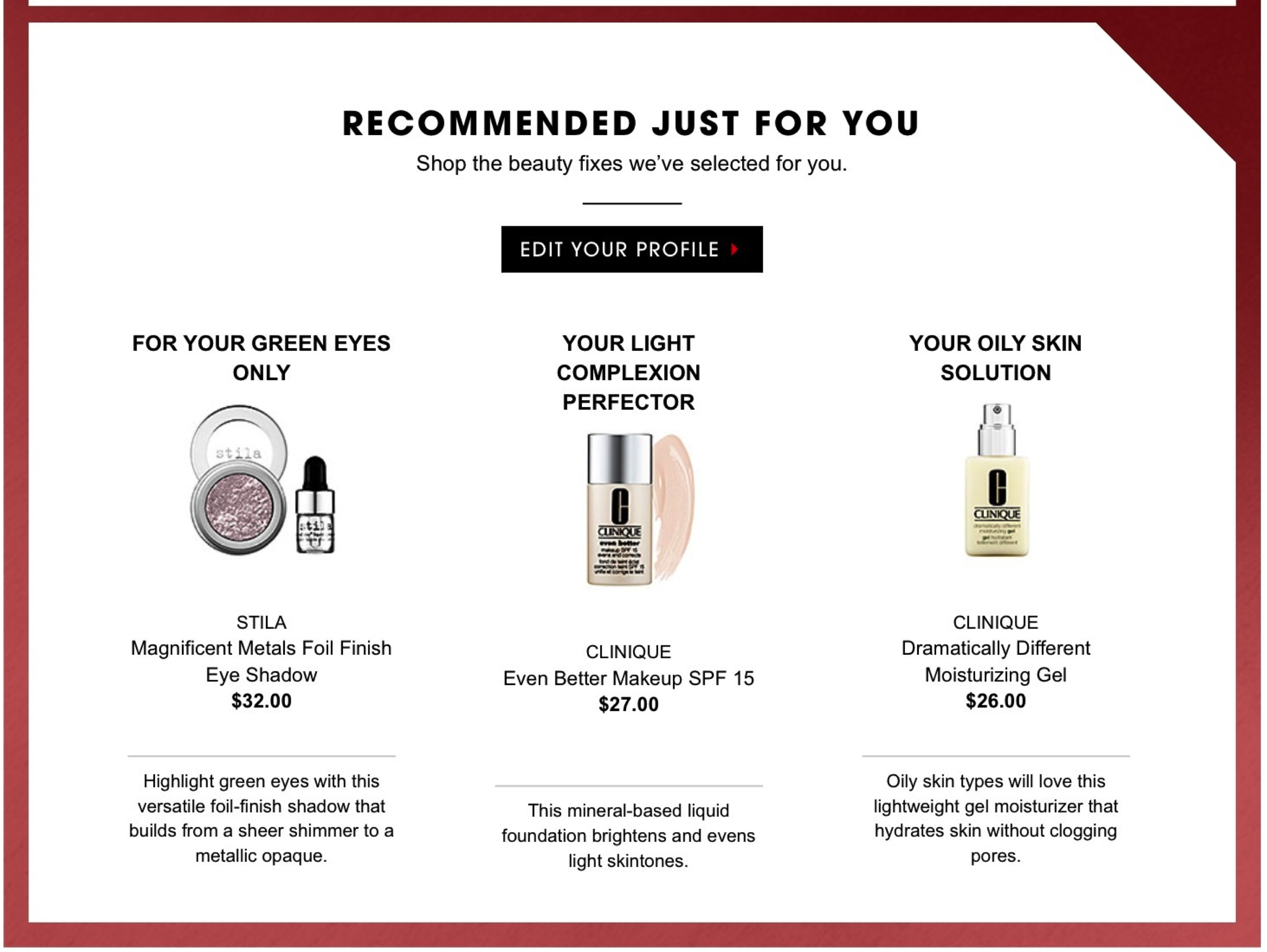
When to send?
Product Recommendation emails share the same timing factor as the up-sell emails. It depends on the type of products you sell. For instance, if you’re selling coffee then you’re surely to expect loyal customers to come and buy from you on a daily basis. For a house appliance center, most loyal customers will spend months until they come and make a second purchase.
- Win-Back Strategy
As agreed, your previous customers are your best catches, so if a client has not made a second purchase within the usual time frame, they need to be put into a win-back campaign.
The secret to nailing this one is to spot behavior that shows customers are ready to defect, and then test for the proper approach to regain their activity.
Messaging, too, is critical. You’ve got to hit a smart start like a “We’ve missed you” theme, followed by a highlight of some cool stuff they may have missed since their last transaction. Drag in some top-sellers or related active content and offer an incentive to re-engage them!
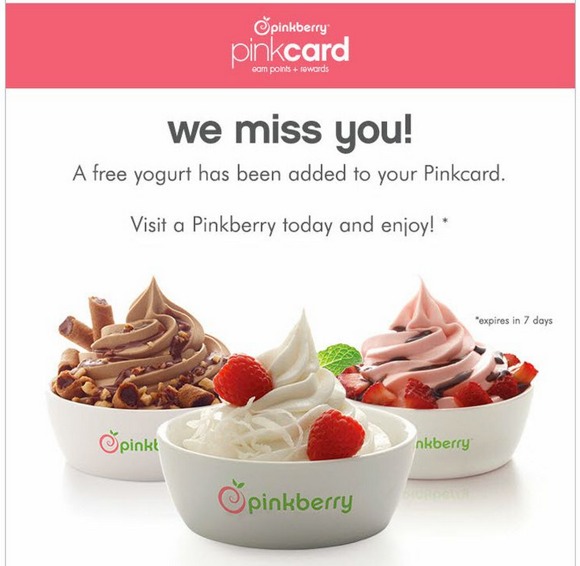
When to send?
In most cases, employing multiple time frames in your win-back campaign – for example, a message at 3 months and then again at 7 months – can drastically increase your success rate. The proper timing of these messages will also vary based on the types of products you sell and the typical repeat purchase.
In a nutshell, sellers who have embraced “behavioral marketing” have all seen perfect results. As you continue to ramp up your sophistication, keep looking for new post-purchase emails you can add to your messaging collection to drive more engagements and revenue.
Keep in mind: Email marketing is great for driving first purchases, but it is perhaps an even more outstanding marketing channel to get those powerful second, third and fourth sales that turn one-time buyers into eternity-loyal customers. If you focus as much on turning existing customers into repeat buyers and brand loyalists as you do acquiring new clients, you will achieve sky-high profits far beyond your imagination.
The good news for you….. You won’t have to do any of this! Using our professional segmenting and marketing automation tools, you can instantly have your customer base segmented, view your statistics, use the smart eCommerce filters, and send personalized and targeted e-mail campaigns to your segmented database using our ready-made email templates!
What are you waiting for? Go ahead and create your account to enjoy our 30-day FREE trial on http://www.revampcrm.com/eCommerce. A smart customer relationship is all you need to increase your profits, guarantee customer satisfaction, and get lasting results!


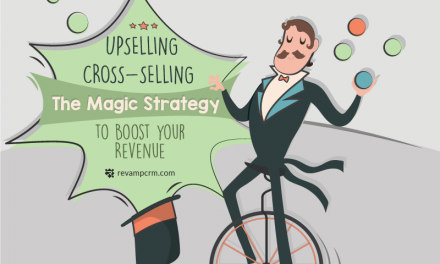

![The Mind Of An Online Shopper [ Infographic ]](https://blog.revampcrm.com/wp-content/uploads/2016/08/13-1-440x264.png)
